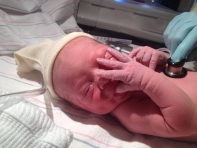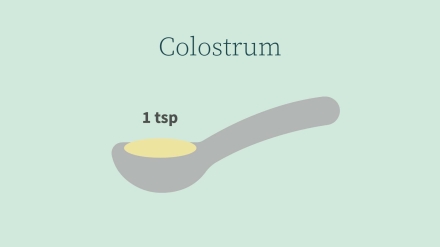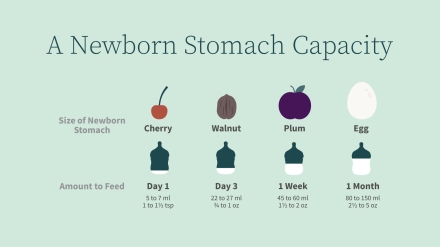Feed, sleep, diaper change
The first two weeks with your baby are just feed, sleep, diaper change, and repeat. Feeding frequently is important because it helps establish a breastfeeding mom’s milk supply and keeps your baby’s bilirubin count at a healthy level. You will continue to wake your baby to feed every 1.5-3 hours if breastfeeding and every 2-4 hours if bottle feeding.
Feeding Anticipations
- During the night, continue to wake your baby to feed, in addition to following Baby’s feeding cues.
- If breastfeeding, offer both breasts each feed. Cluster feeding is normal at this age.
Hunger cues
Healthy newborns, regardless of how you choose to feed, will show hunger cues 1-2 hours after birth, and every 1 ½ to 3 hours after the first feeding. A hunger cue is a behavior that babies exhibit to let us know they are getting hungry. Hungry babies will combine hunger cues with increased agitation. Therefore, the goal is to respond to early hunger cues.

Sucking or feeding motions with their mouth

Exhibiting the rooting reflex—turning their head and opening their mouth when something touches their cheek, usually seeking a nipple

Bringing hands or fingers to their mouth and attempting to suck

Crying, which is a late hunger cue
For breastfeeding families
In some instances, when newborns and mothers are left undisturbed during skin-to-skin, a baby will exhibit something known as “the breast crawl.” This behavior is part of a human baby’s instinctive behavior to seek and attach to the nipple for a feeding.
Colostrum
For breastfeeding parents, newborns will typically latch to the breast in the first hours after birth and drink drops of colostrum, a thick yellowish secretion. Colostrum is rich in antibodies and helps to provide the foundation for healthy cell development in a baby’s gastrointestinal tract. When latching isn’t possible, new mothers can be supported to hand express drops of colostrum to give to their babies in a syringe or a spoon. Parents can also bring the baby close to lick the drops of colostrum from the mother’s breast.

Frequency of feeding
For the first 24-48 hours after birth, it is recommended to offer a feeding every 1 ½ – 3 hours around the clock or on demand whenever the baby shows hunger cues. Throughout the first week after birth, feed early and often whenever the baby shows hunger cues, or wakes from sleep.
Feeding amount
A newborn baby’s stomach can only hold about one teaspoon of liquid for the first 24 hours after birth. Therefore it is important to remember that small amounts will satisfy a hungry newborn!

Cluster feeding
Cluster feeding is a newborn behavior that occurs in the first 2 weeks of life, when babies seek to feed more frequently or in short clusters of time. From a physiological perspective, cluster feeding stimulates a mother’s milk production and sends a message to release the milk-making hormones oxytocin and prolactin. Frequent stimulation and emptying of the breast are the key factors in early breastfeeding success. You’ll also see cluster feeding behaviors during your baby’s growth spurts, which occur frequently throughout the first several months of life.
Offering both breasts
Breast fed babies should be offered both breasts at every feeding. Your baby may not always take both breasts in the early days, but it is good practice to always offer both to provide stimulation and encourage the onset of mature milk production.
For bottle feeding families
Bottle fed babies should be offered formula in small amounts for their first feeding, and typically eat ½ to 1 ounces per feeding in the first few days after birth.
After the first feeding
After their first feeding, newborns become very sleepy and often sleep for several hours as a way to recover from the stress of labor and birth.
